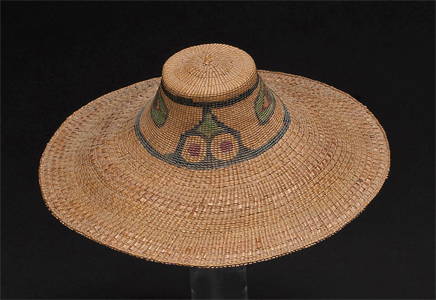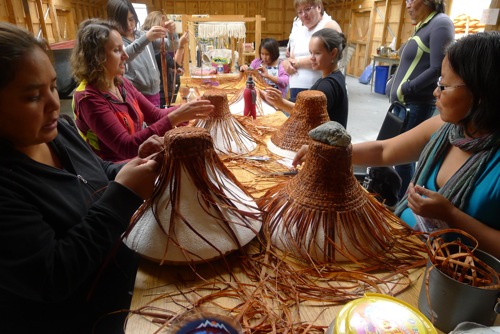





 1
1











 1
1




"Also, just as you want men to do to you, do the same way to them" (Luke 6:31)
 2
2




Inge Leonora-den Ouden wrote:That seems nice and warm to me, Deb! A lot of work to crochet, and probably heavy, but if you really want 100% plant fiber, this might be the solution.




Zone 3b, Lower St. Lawrence, Quebec










"Also, just as you want men to do to you, do the same way to them" (Luke 6:31)
 1
1




Do, there is no try --- Yoda
No one is interested in something you didn't do--- Gord Downie
 6
6




 4
4








Mick Fisch wrote:
I'm puzzled about no wool. Shearing the animal does it no harm and provides an incentive for people to keep sheep on less than ideal land. The animal species and breeds the go extinct are the ones that no one has a personal reason to save. I'm curious if you or she can articulate why she feels that wool isn't acceptable. If it isn't easily articulated, that's ok because in private matters, "It just feels right to me" is a perfectly acceptable reason. I think most people have certain things that, whatever justification they might come up with, are really based on "just it feels right".
Jeff Marchand wrote:She should find someone with a pet Old English Sheepdog. They must be shorn regularly. My mother used to breed them for many years. Some people have made clothing from it. Would be very warm.
This might be a stretch for a vegan but why not tan the hides of roadkilled deer, coyotees, foxes and raccoons? These are accidental deaths and her repurposing their hides would bring more honour to the animal than let it rot in a ditch.













 1
1




R Ranson wrote:...
We had a long chat about this and she says that animal castoffs don't count as vegan - even for things like wool where the animal suffers if it isn't shorn. I don't understand the justification for this so I'm not going to try and explain it. What I do understand is that it's important to her to be consistent with her values. Vegan means using no animal products, even if the animal isn't raised to create those products. This means that roadkill is out too.
Another thing that came up was the idea that the item could be made in part by non-ecofriendly means (like some of these new rayon's from bamboo or soy) but was built to last. So, if this thistledown jacket had a synthetic lining, would that still be okay if the jacket would last her 50 years? We don't know. It would be a step better than short lasting synthetic textiles. With wool and linen, we can make clothing, by hand, that lasts decades (or at least we used to be able too, these skills are almost lost now). Does the life of the cloth effect how eco-friendly it is? It's more a hypothetical question, but one to ponder while we wait for more ecologically sound clothing to come on the market.
"Also, just as you want men to do to you, do the same way to them" (Luke 6:31)
 1
1




Inge Leonora-den Ouden wrote:
R Ranson wrote:...
No animal products, or only plant products? There is a difference. Mineral products does not count as animal products, but neither as plant products, they are called 'lifeless'. Does a vegan use mineral products?
If I were a vegan, I would not want to use oil-based products. Oil is a product of animals+plants living very long ago.
I would consider too if the production process is animal-friendly (and people-friendly too).







 4
4






Projects, plans, resources - now on the Permies.com digital marketplace.
Try the Everything Combo as a reference guide.





Projects, plans, resources - now on the Permies.com digital marketplace.
Try the Everything Combo as a reference guide.




 7
7




I wondered where gleaned animal products that don't harm or even involve animals working for people would fit.
Practice being a Maker without first being a Consumer whenever possible...
 1
1

















 1
1




raven ranson wrote:My friend told me this winter that she's given up on this quest.
She had some dangerous encounters with winter weather and not being dressed warm enough in plant-based clothing. She's now debating with herself about going back to synthetics or striking wool of her animal-product ban. Wool is renewable and better for the environment than the synthetic (because she can source wool garments that are grown and processed locally to her), but wearing it would mean she can't call herself vegan anymore (by her personal strict standards).
I still think it could be possible to be both eco-friendly and vegan. I am just not sure how to handle a cold winter like they ones we get in the rest of Canada.
Can we keep brainstorming ideas?
"Also, just as you want men to do to you, do the same way to them" (Luke 6:31)
 3
3




 4
4




Visit Redhawk's soil series: https://permies.com/wiki/redhawk-soil
How permies.com works: https://permies.com/wiki/34193/permies-works-links-threads






 1
1




Jay Angler wrote:I wish I could add some brilliant idea, but most of the things I've thought of are already mentioned.
I agree that staying dry is crucial which is why cotton is discouraged for cold, damp climates. I'm not sure what the underlying material is in the oiled coat a friend wears, but as mentioned, many of those finishes includes some beeswax.
If your friend is forced to compromise, I felted a pair of slippers out of gleanings from a friend's poodle. As has been mentioned regarding dogs, some of them actually benefit from responsible grooming at the right time of year, and I've received bags of it. I would never accept it if it wasn't done in the dog's best interest.
"Also, just as you want men to do to you, do the same way to them" (Luke 6:31)
 4
4









 7
7




He whai take kore noa anō te kupu mēnā mā nga mahi a te tangata ia e kōrero / His words are nothing if his works say otherwise






 1
1




M Broussard wrote:Locally, kakahu (a rain cloak made from harakeke--NZ flax) were worn prior to settlement by Europeans, even in areas with cold/wet winters (bottom of the South Island is similar to the Pacific Northwest). It takes a tremendous amount of skill to weave a rainproof garment, but these could then be passed on for generations.
...
A more practical approach would be to try using the clothing design techniques that the Inuit developed (scientifically verified this year to be the most insulated garments on earth) with plant-based materials. Cotton can be made into a faux fur (purchased that way, or by incorporating loops of yarn into the weave--a traditional practice dating back to at least the dark ages). If two of these layers face toward each other, and the outer layer is an oilcloth or similar waterproof garment, the cotton should be protected from becoming cold and wet and therefore retain its insulative properties.
...!
"Also, just as you want men to do to you, do the same way to them" (Luke 6:31)
 2
2




This is all just my opinion based on a flawed memory







 1
1




Ben Zumeta wrote:I just think this problem begs for rethinking how we can serve the animals who give us regenerative resources for our own survival, like wool or silk.
"Also, just as you want men to do to you, do the same way to them" (Luke 6:31)
 3
3





|
You got style baby! More than this tiny ad:
Support permies and give beautiful gifts to gardeners: permaculture playing cards.
https://gardener-gift.com/
|







